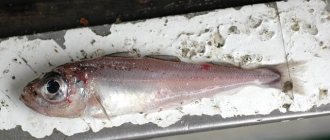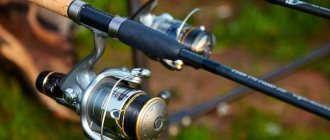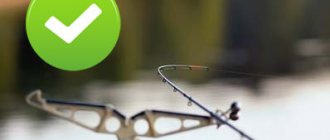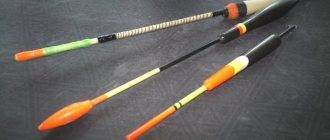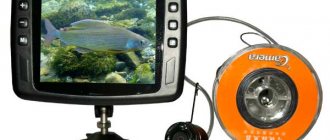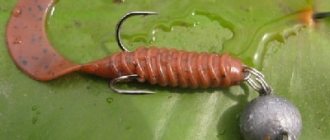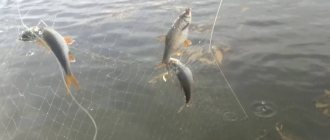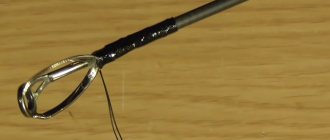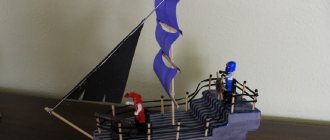Every fisherman wants to have the best tackle and equipment in his arsenal. This also applies to such a small thing as a float. Lovers of “silent hunting” constantly debate which float is better. There are a lot of opinions on this matter and they are all different.
Let's figure out how to choose the best float for fishing and discuss the most interesting opinions about this equipment.
Types of floats
All float products perform the same function - they report a bite. Essentially, the principle of operation is the same. When the fish starts to bite, then the bite indicator reacts and begins to move or sink.
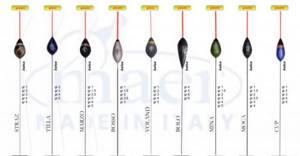
Floats differ in shape, weight, size, color and type of material from which they are made.

Conventionally, they can be divided into several types:
Teardrop-shaped. Very good for deep fishing. It has a low center of gravity, is very stable and shows a bite even in choppy water.

Spindle. This species is very sensitive and is needed for catching cautious fish. It is advisable to use only for fishing in still water (stakes, lakes, ponds) with a depth of no more than three meters.
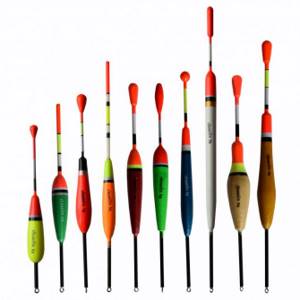
Ball. Very stable in strong winds.
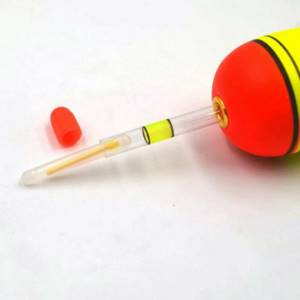
Straight. One of the most common. It has a rather simple shape. Suitable for fishing in good weather, in reservoirs with a depth of up to two meters.
Read here Do-it-yourself Zherlitsa - manufacturing instructions and secrets of use in winter (110 photos + video)
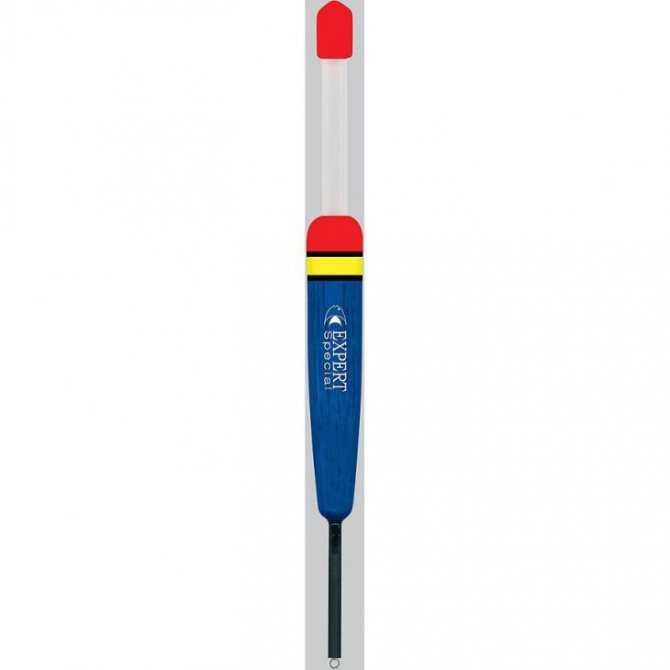
Inverted drop. An ideal choice for fishing at great depths with underwater currents.
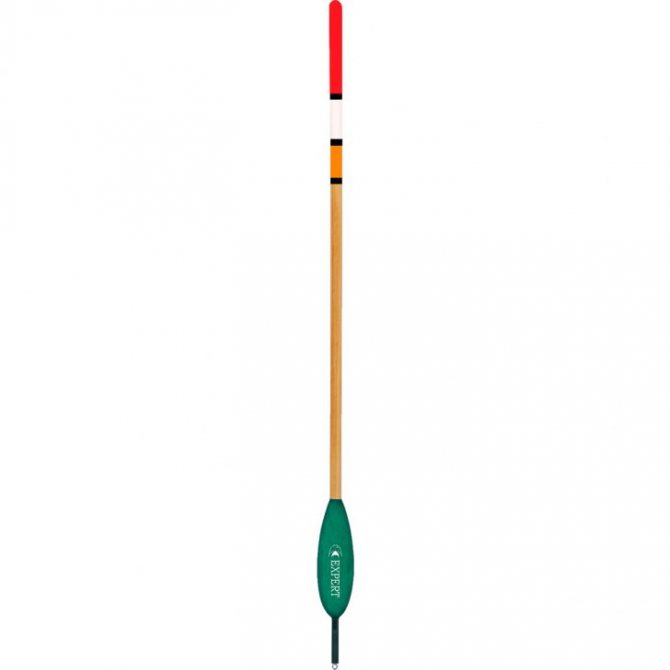
Olive. Used under different fishing conditions: waves, wind, calm weather. A fairly stable float, and essentially universal.
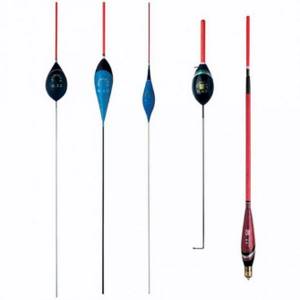
Double sided cone. Suitable for fishing on canals with weak and medium water flow. Very stable due to the long keel.
How to choose a float based on fishing conditions
The choice of float often determines the effectiveness of fishing. A correctly selected and correctly loaded bite alarm will ensure the delivery of bait to the specified fishing horizon and will allow you to register the slightest touch of the fish to the bait.
Float for fishing in calm water
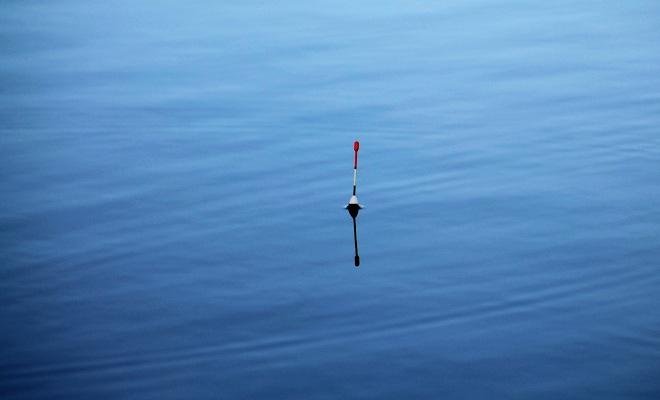
When fishing on ponds and lakes, most anglers use amateur versions of bite alarms, loaded with one sinker and protruding 10–15 centimeters from the water. This approach to constructing equipment may bring some results, but it is unlikely to provide the fisherman with a decent catch. For fishing in still water, you should use a sports model characterized by:
- short keel no more than 7 cm long;
- a body that has a widening at the bottom and gradually tapers at the top;
- thin plastic antenna in a one-piece design.
The short keel and pear-shaped shape will ensure the stability of the float even in strong waves. Loading is done in such a way that in the working position the antenna sticks half out of the water. The bulk of the sinkers are located a meter from the connection of the leash and the main fishing line. Another 3-4 small pellets are attached 30–50 cm from the connecting node. A small sinker is placed close to the knot. This immersion method allows the bait to slowly sink to the bottom, which does not alarm nearby fish.
If the carrying capacity of the float exceeds 3 g, in order to avoid frequent tangling of the equipment, instead of a set of upper sinkers, an olive weight is installed on the fishing line, locked on the main monofilament using small lead pellets.
For fishing in ponds, you should use models with a carrying capacity of 0.5–1 g, which will allow the equipment not to create a lot of noise during splashdown and will not alarm underwater inhabitants in shallow water. In small, closed reservoirs there is no such strong wind and big waves as in open space, so the use of light floats for fishing is quite justified.
When fishing at a depth of 2–3 m, it is better to use a bite alarm with a carrying capacity of 1.5–2 g, which will speed up the delivery of bait to the bottom and make fishing more dynamic. If fishing is carried out at depths of 3–7 m, then you will have to use floats with a carrying capacity of 2.5–6 g. You should not be afraid of the loud splash of the equipment on the water during splashdown, since at great depths the fish does not pay attention to weak surface sounds.
Float for fishing in currents
Models for fishing in currents are radically different from those used for fishing in still water. Their main differences include:
- body shape close to spherical;
- hollow antenna;
- long keel.
A spherical body, in contrast to an oblong one, is less subject to the pressure of a directional flow of water, which has a positive effect on the sensitivity of the equipment. The hollow antenna has its own buoyancy and does not go under water when sinkers pass various bottom irregularities. The long keel ensures the float a vertical position even in strong currents.

When fishing in a weak current, the same type of weight is used as when fishing in calm water. If fishing takes place on a river with a medium current, models with a carrying capacity of 4 to 8 grams are used, loaded with one sliding sinker. The immersion depth of the equipment is adjusted so that it is one meter more than the actual one. During fishing, the sliding load, carried by the float, drags along the bottom. This method of loading makes it possible to thoroughly fish all the unevenness of the bottom topography.
If the water flow is very strong, as often happens during high water, then you can only fish with a plug rod equipped with a flat float. Flat models perfectly resist currents of any force and are able to register careful fish bites. The load of such a signaling device consists of 1-2 small lead pellets located 40 cm from the hook, and the main load located a meter above.
For fishing in the wind
In windy weather, you should fish with models with a long body and a lower attachment point. A long alarm will not be overturned by waves, and a low mounting point will reduce the influence of surface current on the fishing line, which will also have a positive effect on the stability of the float.
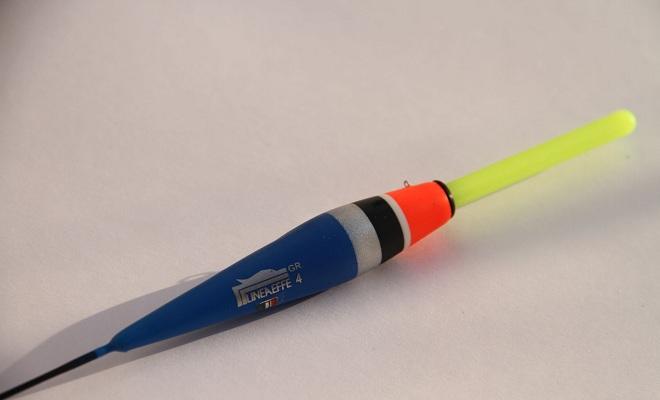
To be able to cast the tackle in windy weather, the load capacity of the float must be at least 4 g. If we are talking about long-distance fishing, then the total weight of the equipment can reach 15 grams.
For catching small fish
Small fish are caught in shallow water using short rods, so light alarms with a load capacity of 0.1 to 0.5 grams are used for fishing. The keel of such models is very short, which allows the float to take its working position immediately after splashdown, which is very important when fishing at shallow depths.
The sinker is located 10 cm from the hook. The bulk of the loads are attached 15 cm higher. In such a rig, you cannot place one large weight instead of the top set of sinkers, as this will result in tangling of the main line and leash.
For long casting
For fishing in calm weather, at a distance of 15–20 m from the shore, a match model with its own load of 2–4 g is quite suitable. When fishing at a distance of 20–30 m, you should use heavier options weighing 5–8 g. If you plan to fish at a distance of 40–60 m, you will need a signaling device with its own load of at least 10 grams. and a sliding mounting option.
The equipment must be mounted in such a way that 70–80% of the total weight of the weights is concentrated inside the body or moved close to it, which is necessary for long casting and to prevent tangling of the monofilament.
To increase the flight range, match models are equipped with plastic stabilizers that improve their aerodynamics. To make bites visible from a long distance, a bright-colored hollow cap is placed on the alarm antenna, which has zero buoyancy and does not affect the sensitivity of the gear. Since match fishing involves power casting, the bite alarm must be securely attached to the main line using a connector.
Floats for live bait fishing

To fish for predators using live bait, models with a carrying capacity of 3–10 grams are used, which allows you to throw the bait quite far from the shore. Such alarms are loaded in such a way that 20% of their body protrudes above the surface of the water. Such a load is needed so that the live bait cannot sink the float on its own. The live bait float is loaded with a stationary olive sinker.
Long casting tackle
Many fishermen like to fish with long casts. This type of fishing is somewhat different from fishing near the shore.
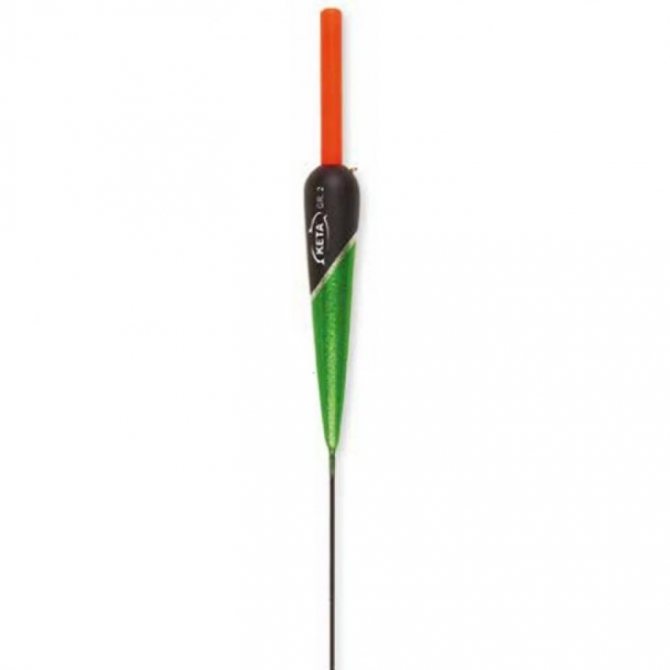
A feeder is attached to the end of the fishing line, which, due to its weight, allows you to throw the tackle quite far from the shore. Thanks to the inertia-free reel, the line does not get tangled.
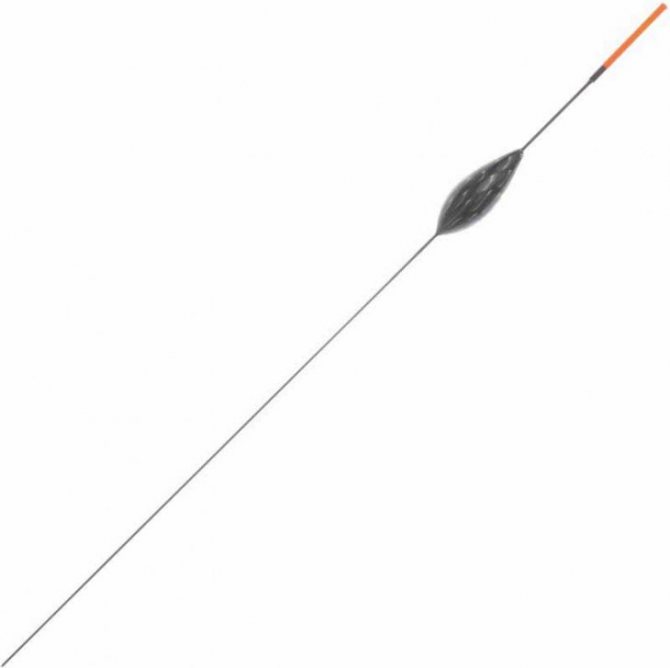
It is desirable that there is a rounding at the end of the tip. This will give stability to the bite indicator.
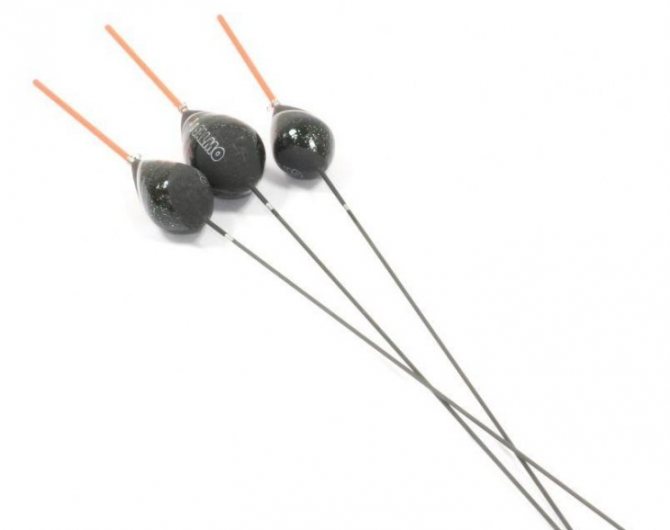
Note!
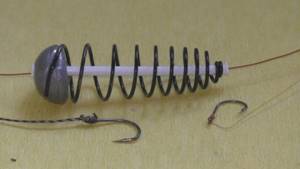
Fishing with a spring - rigs, baits, baits, gear and methods of fishing with a spring (80 photos)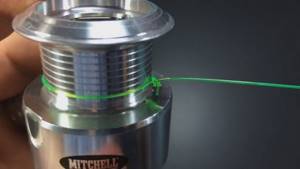
How to tie a fishing line to a reel - methods, tips on how to tie correctly and an overview of the most reliable knots (85 photos and videos)
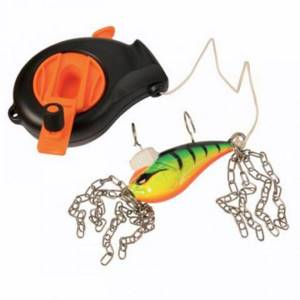
Cuts for wobblers and spinners - how to make a simple homemade cut. 110 photos and videos of practical tips
Sports and flat floats
There comes a time in the life of every fisherman when he wants to purchase a universal float for absolutely any fishing conditions. However, in reality it does not exist, although some models are distinguished by excellent catchability in different situations. These include sports varieties of products. The principle of operation of such floats is very simple: they have an ultra-sensitive design and at the same time a low center of gravity. Due to these two factors, the float remains as stable as possible.
Among the design components of the sports float:
- The body itself.
- Top ring with cambric.
- Antenna.
- Keel.
The float is fixed to the main line by means of an upper ring and a cambric.
To change the angle of inclination, just change the position of the top ring. Such characteristics allow the product to be used in conditions of strong currents.
As for flat models , they are not widely used, because they are made for a narrow purpose and professional fishing. Models of this type are in the form of a flat disk or any other figure, but always flat. Among the main features of the product is the presence of a keel placed at an angle. This feature allows the float to maintain a vertical position even in the most intense current.
The float body is positioned with its edge facing the flow, which minimizes its resistance.
Fishing with a fly rod
Fishing with a fly rod is fishing from a boat or near the shore. This type of fishing is mainly used in reservoirs with stagnant water.
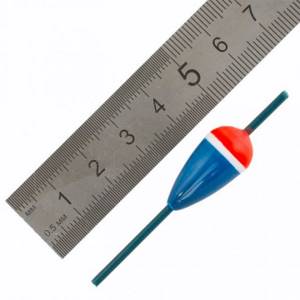
The best float for a fly fishing rod is considered to be an olive. This type of gear floats very well and has good information content. This allows you to notice even the weakest bite.
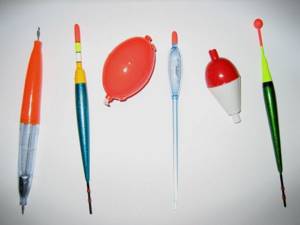
Float weight
How to choose a fishing float is a question that worries not only beginners, but also professionals who want to expand their skills and experience. However, in addition to purchasing a suitable model, it is necessary to pay due attention to the issue of loading on the current. It is important to understand that a classic lead sinker will not be able to cope with its responsibilities, so for effective fishing you will have to use several weights at once.
In most cases, fishermen choose three main types of loads that correspond to certain fishing conditions:
- If we are talking about the need to fix the bait at one point or perform short-term retrieves, then the load should always be placed on the bottom. At a distance of 3-5 centimeters, install two weights with number 3, and another weight to prevent accidental tangling of the equipment. After another 25 centimeters, the main load is attached, which makes up 90% of the total mass of the load.
- If the fisherman is going to carry out fishing with short stops, then one load, which occupies 10 percent of the total load, should be placed on the bottom, and after 25-30 centimeters from it a pellet number 5 is attached, and then after 40-50 centimeters a second pellet with similar number. Also, after 15-20 centimeters, the main load is fixed, comparable in weight to 80% of the entire load.
- If you are going to catch bream, then the chosen float should remain resistant to environmental conditions and at the same time have a slight sensitivity. One pellet must be kept at the bottom, and the rest of the shipment, amounting to 90% of the total load, must be secured at a distance of 5 centimeters from it. The use of this technique eliminates the possibility of wiring.
Fishing on the current
For fishing on rivers with strong currents, specially designed gear is used.
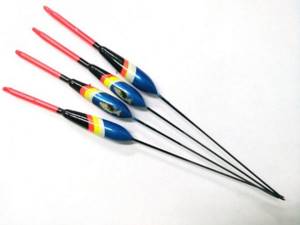
The body of the rig should create minimal resistance to flow. Therefore, it is flattened on the sides and quite wide.
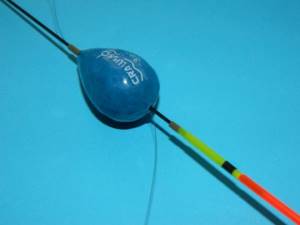
For stability, the float has two mounting brackets and a metal rod. This design ensures minimal influence of water on the performance of the gear. The best float in the current is considered to be flat.
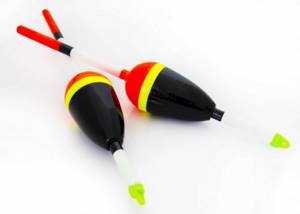
That's all. We hope that our article will help you choose a float easily, quickly and competently. Good luck with your fishing and have a good rest.
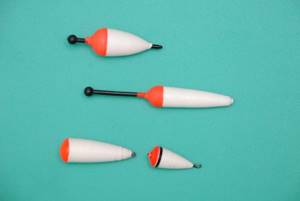
Short description
Fishing floats are one of the key components of float equipment. The more correctly its design is made, the more convenient it will be to fish in various conditions, for example, with intense currents. By the way, for this purpose, flow floats are specially made, which are distinguished by a wide shape, but flattened on both sides, capable of providing minimal resistance to the moving water pressure.
Such products have two attachment points. The expanded part is a control element, and a metal rod with minimal thickness acts as the center of gravity. The structure practically does not change its position in the water under the influence of the current. Models with “pear” and “egg” shapes are available for sale. Depending on the shape, they can be intended for different fishing conditions:
- Pear-shaped floats are suitable for deep fishing.
- “Egg” floats are effective in situations where the fish moves the bait to the side when biting, and also when necessary to make long casts.
- Flat floats allow you to keep the bait on the bottom during intense currents.
Photos of the best floats
Help the project, share on social networks 

0
CRALUSSO BOLO
Such a fishing tool was invented by the popular Hungarian fisherman Károly Kralik . According to professional fishermen, after the appearance of this model, a real revolution began in the fishing world. Today, it is used not only by athletes, but also by ordinary beginners or amateurs.
By the way, thanks to this float, the Hungarian team won a well-deserved victory at the World Fishing Championships, which took place in 2003. The Hungarians gave priority to the new floats and were right. After the phenomenal success, many fishermen wanted to buy the same floats for themselves.
The CRALUSSO BOLO model , which is also called a “torpedo”, is capable of maintaining maximum stability in any current, having a load of 0.5 to 40 grams. It is actively used when fishing on rivers with different water strengths, as well as on canals. The ideal fishing technique is to stop the float at the point where the bait is placed, as well as subsequent slow and stepped retrieves.
The design is equipped with a functional petal, which can be installed in the upper part of the float. If there is a petal, the product retains its stability much better.
Once the nozzle is in the right place, the fisherman does not have to put the tip of the float under the water: with the help of the petal, all this is done very simply. The float is placed on the fishing line in such a way that it does not touch its body.
Float casting distance
Several factors also affect throwing distance. This is the mass and features of the forms. The larger the area, the more difficult it will be to make a long throw. Everything is simple here. However, with mass everything is somewhat more complicated. A float that is too light will be difficult to cast, as will one that is too heavy. So you need to find the ideal weight for yourself.
Relatively recently, a new type of fishing float was invented. Wenger invented it. The operating principle was based on the fact that it is possible to change the required float load along the way. This means that this float becomes almost universal and will suit almost all fishing scenarios.
In order to catch small fish, floats with minimal load on the float are often used. This allows you to get maximum sensitivity to all fish bites.
So, for each specific narrow situation there is its own type of fishing float, which allows you to get the maximum catch with the right approach to the matter.
Happy fishing!
DIY float
You can make a float yourself - you will need a knife and floating material, from which you simply cut out the shape of the desired shape.
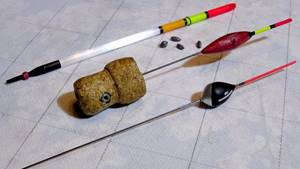
What can be used as a float? A small wooden barrel, a piece of polystyrene foam, a small plastic (if it is sealed) will do - you just need to take into account the load-carrying capacity of the object (checked by hanging a sinker of a certain mass). The higher the load capacity, the lower the sensitivity and vice versa.

When choosing a float, consider, first of all, your skill level, the type of body of water you are going to fish on, and the depth at which the desired prey lives. Happy fishing!
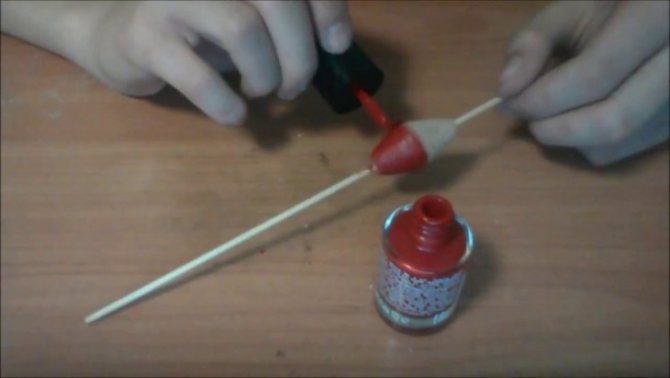
What floats are there and their variety
Floats with fixed mounting method
Floats of this type are the simplest and most convenient to use, and most importantly, almost everyone knows them. They are usually attached to the fishing line either by the antenna or keel, or by both of these places at once. Many argue that floats that are fixed in two places at once signal fish bites somewhat better and provide much more options when playing with the nozzle. They are secured mainly using rubber cambrics of various types.
Read: Choosing a float for fishing. Tips for beginners
Sliding floats
The difference between these floats is that they are attached to the line only by means of a ring at the bottom of the keel and therefore can move freely both up and down the line. The upward movement of the float is stopped using either a lead sinker of the smallest size, or using rubber stoppers sold in all fishing stores. In most cases, these floats are used when casting in a weak current or where there is no current at all. They also like to use sliding types of floats at a sufficiently large depth, exceeding more than half the length of the selected fishing rod.

